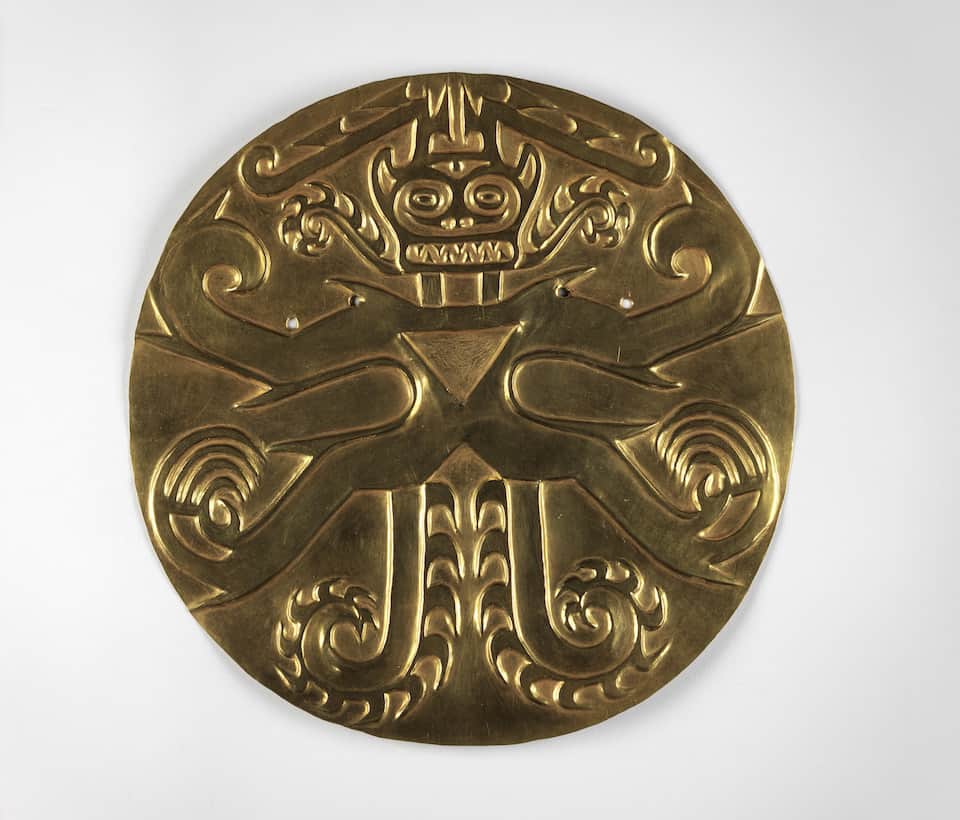[dropcap]T[/dropcap]HE Gardiner Museum’s latest exhibit Beneath the Surface: Life, Death, Gold and Ceramics in Ancient Panama explores artifacts left over from the Coclé people of ancient Panama. On lease from the University of Pennsylvania’s Museum of Archeology and Anthropology, the exhibit displays artifacts specifically from the unique Burial 11 archeological site, which entombed 23 people.
Located near the southern coast of Panama, the Coclé civilization flourished over a thousand years ago, around the same time as the Mayans and the Inca. Their legacy was small, however, and the larger empires of the Mayans and Inca overshadowed the accomplishments of the Coclé in Central America. To shed light on the forgotten history of these people, a large portion of the exhibit is centred on the Coclé’s intricate, artistic use of gold and clay.
The exhibit displays pottery, dishes, and effigies made of clay. Most designs depict animals from the surrounding region. According to the exhibit, Coclé artists would often take characteristics of various animals to create a depiction of one single beast. They were inspired by the wildlife surrounding them and highlighted aggressive features, such as jaws or fangs, as symbols of beauty.
The most fascinating aspect of the exhibition is the sheer variety of the golden artifacts. The sophisticated plaques and pendants range in size, but even the smallest artifacts demonstrate meticulous attention to detail. According to the catalogue, “gold ornaments demonstrated that the wearer had energy from the sun, the most important force in the cosmos.”
The exhibit encourages the viewer to reflect on the way that early civilizations created such incredibly complex art without the modern equipment that is used today. The centrepiece of the collection — a re-creation of the burial site — is revealed at the end of the exhibit. The grave is roughly 12.5 feet deep and consists of three vertical layers of people. The skeleton of each body is shown precisely where it was found at the original site, likely thanks to the archeologist’s use of wooden frame mapping and photography.
The Paramount Chief of the Coclé people was buried in the very middle of the second layer of the grave and elaborately adorned with beautiful necklaces, pendants, discs, and bracelets upon his death. The most astonishing piece of jewelry is a jaguar pendant with a large emerald in the centre. The jaguar is one of the most sacred animals of many Latin American civilizations; the one depicted on the pendant has large wings and two flat tongues.
There was also a woman who was also located in the second layer of the grave. Mysteriously enough, dog teeth were discovered scattered around her body upon discovery, which the exhibition curators hypothesize may have been sewn to her apron or dress. Just like the Paramount Chief, the woman had gold pendants buried alongside her. According to exhibit, the middle layer of the burial site was meant for the wealthy and important individuals of the civilization.
The exhibit’s small size achieves the primary objective of any presentation: to keep spectators interested through its entirety without overwhelming them with information.
Although the exhibit does display artifacts similar to the ones you’ve seen on middle-school field trips, there’s just enough on display for everything to register and leave you with a newfound perspective on the ancient culture of Panamanians.
Beneath the Surface: Life, Death, Gold and Ceramics in Ancient Panama runs until May 29, 2016 at the Gardiner Museum.


